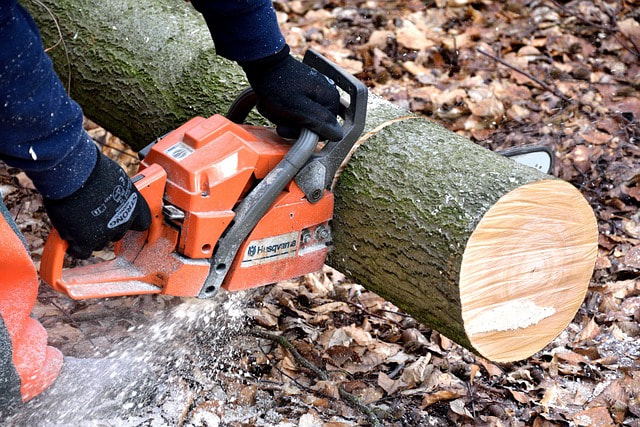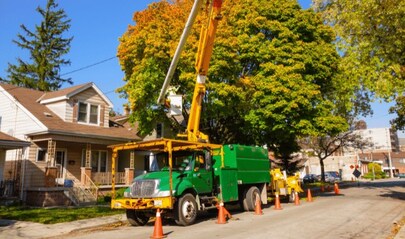|
Awareness of one's personal ecological footprint is crucial in today's world. Trees play a big role in keeping our planet healthy, so it's crucial to find a good tree removal company when it's time to take one down. But how do you know if a reputable company will do well? This article will provide some tips on what to look for when it comes to choosing a good tree removal company. What Are Tree Removal Services?Tree removal companies are needed because they help eliminate too big or dangerous trees. When handled improperly, tree removal can be incredibly hazardous; hence why it's essential to hire experienced professionals when tackling this task. Luckily, reputable tree removal services will take all the necessary safety precautions to ensure that the plants and the people working on them are safe and healthy. Discover the Diversity of Services Provided by Tree Removal CompaniesPrioritizing a thorough assessment of the services provided by any tree removal company is essential to ensure you receive the best quality service. Most companies should offer some form of consultation before beginning any project, so you can discuss your needs and receive an estimate of how much it will cost. Some other typical services offered by tree removal companies include: PruningPruning is necessary for maintaining your trees' health and safety. When done right, pruning can not only make the way a plant grows look better, but it can also protect it from damage or disease that could happen in the future. Prune strategically to ensure that your tree remains healthy and beautiful. FellingCutting down a tree, otherwise known as felling, is best entrusted to professionals. It can be hazardous - and even fatal - if done incompetently or recklessly; therefore, it's essential to employ reputable arborists with the proper experience and equipment for this job. Make sure you hire someone with an established track record so you can quickly know your trees are handled safely and responsibly. Stump GrindingAfter a tree has been chopped down, grinding the stump is necessary to eradicate it. This specialized service must be offered along with tree felling services because it can be hard or even impossible to remove a whole tree without first cutting down the stump. Stump grinding makes this process feasible and easy. Benefits of Hiring a Good Company
How to Pick the Right Tree Removal CompanyNow that you know what services tree removal companies offer, It's now or never to begin your search for The One. A reliable tree service can be found by following these suggestions.
Make sure the company is licensed and insured Probably the essential thing to think about when hiring a contractor is this. You can trust that a company is reputable and that its personnel are covered in the event of an accident if they have proper licensing and insurance. Check out their reviews One of the best ways to learn about a service provider's reputation is to read online customer evaluations. There should be more positive than negative feedback. However, if you notice a lot of complaints or negative comments, consider looking elsewhere for your tree removal needs. Ask about their experience Experience is vital in any work, especially when dealing with something as powerful and unpredictable as trees. Make sure the company you choose has years of experience in the industry so that you can rest assured they know what they're doing and can handle the job correctly. Compare prices It's always wise to get quotes from at least three companies to compare their services and prices. This will help ensure you're getting the best deal possible while still receiving quality services from an experienced provider. Absolutely, tree service is one of the essential services. The tree maintenance actions guarantee that your trees continue to be healthy and swiftly expand in size. Trees are essential to the aesthetic value of any property, regardless of whether they are used for residential or commercial landscaping. They can convert your house into a place where you can unwind and relax, and they may also help your company seem friendlier and more approachable to customers. But even having the best of intentions, there are instances when it is simple to overlook something that needs care. It is highly recommended that you contact a tree service as soon as possible if you see any of the following warning signs: Signs For Tree ServiceThe trees have suffered basic damage Your trees have either gone hollow or have branches that appear to be about to break apart. The structure's integrity is the primary focus of an arborist's work. An arborist is an ideal person to advise you on the following activities that you should take, whether it be removal or bracing. There is also some other peculiar structural form that calls for further investigation. If you do not take necessary steps at the right time then the more difficult it will be to rectify finally. A storm has caused severe damage Following a storm that passed, your tree has sustained some damage. You should get some help cleaning up any debris and double-check your health in case it was impacted by whatever happened. Call for assistance. For instance, if lightning has just hit your tree, a well-considered application of slow-release fertiliser may be precisely what the tree needs to recover. Still, you should always check with a professional gardener first! Your tree has either been infested with insects or is suffering from an ailment Some unwelcome guests are plaguing your tree. Several do-it-yourself remedies are circulating the internet on how to manage the problem. Still, a single ingredient or application that is mishandled might be what causes the problem to become even more severe. A trained tree will be the most capable of determining the precise cause of the problem and developing a strategy for effectively addressing it. They will be able to evaluate if a portion of the tree, such as a branch, has been damaged to the point where it has to be removed. You will also need someone knowledgeable on safeguarding any surrounding trees since many pests and illnesses may quickly migrate from one tree to another. Your tree may come into contact with powerlinesSome of your trees are getting dangerously close to the powerlines that are nearby. Because of the potential risk posed by being close to electric current, you must get in touch with an ISA-trained arborist to take care of this substantial undertaking. If your tree's canopy is growing in dangerous proximity to the powerlines above, you must prune back those branches. Because of the risk involved with this work, you should choose an arborist with the appropriate education and experience level. Your tree seems to be sick or lacking in strengthThe appearance of your trees has changed; they may now be discoloured, flaking, or cracked. A certified arborist will be able to assist you if you notice that your tree does not seem to be in good health, but you are unsure as to which illness is to blame. An arborist can determine the illness that is ailing your tree, treat it to cure the sickness or, at the very least, decrease its symptoms, and then identify the condition.
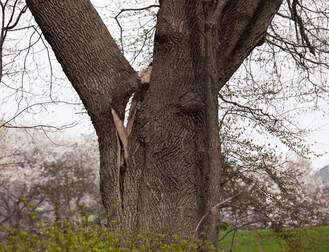 A tree with a dangerously cracked branch A tree with a dangerously cracked branch It isn't easy to recognize dangerous trees. That's because trees have identifiable enemies such as disease and drought. Keep reading to know which red flags to take notice of among the trees in your landscape. Spotting Dangerous Trees: A Game of Hide and Seek To start your examination of a tree, go to the bottom. If ground cover plants are covering the bottom of the trunk, pull them back. The presence of mushrooms could denote a severe issue. Move on to inspecting the perimeter under its canopy. Look for roots coming up from the dirt. Noticeable roots are not challenging in and of themselves. However, if there are indications to suggest that the tree is stressed, then jutting roots could mean that the tree is on the brink of falling over. Lightning If you come across a tree that's missing pieces of bark on its trunk, lightning probably hit it. Made up of water, trees are good electricity conductors. When lightning hits the canopy, it goes to the root system, boiling sap and creating steam. If there's damage to only one side, the tree may completely recover. But if the bark is missing on many sides, the tree is possibly not going to survive. Branch Inspection Since dead branches are the first to drop, it's wise to get rid of them from trees situated close to the house. On deciduous trees, dead limbs either have brown leaves or no leaves. If inspecting evergreen trees, look for no bark and brown needles. When it comes to pruning, hire a tree expert. Two-Trunk Trees When trees have two or more trunks, inspect the point where they unite. U-shaped connections between trunks are typically not an issue. However, a tight "V" shape signifies a weak spot. If you're anxious about a particular tree, you can have from splitting in two. For this project, you need to hire a tree professional. If you are unsure about the health of your trees, you should hire a certified arborist. Besides possessing the much-needed knowledge, training, and experience, arborists have specialized equipment they can use to make high-level analyses. Call Tree Service York PA and speak with one of our skill arborists. 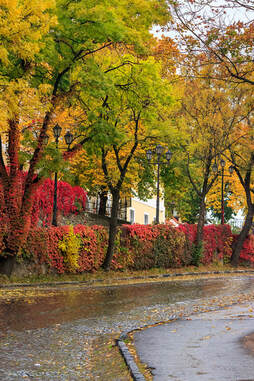 A tree ordinance can control trees planted near roads A tree ordinance can control trees planted near roads More and more communities are starting to see the distinct advantages that trees deliver in an urban area. A tree ordinance is among the tool used by communities desiring healthy and well-managed trees. By themselves, tree ordinances can't guarantee tree maintenance for the trees in your community. A tree ordinance gives authorization and standards for management duties. If these tasks aren't a part of the whole management strategy, issues will arise. Without a complete plan, management will be useless, and the community trees will suffer. Healthy trees lessen air pollution, offer cooling and shade, raise property value, and contribute to a community's image and pride. Many communities understand that to enrich and safeguard their valuable tree resources, it is beneficial to manage their trees as a community. Tree Ordinance Types There are three basic categories of tree ordinances. A street tree ordinance mainly covers tree planting and tree removal within public rights-of-way. It usually contains requirements governing maintenance or replacement of trees which present a hazard to the public. Also, tree planting requirements are a part of this category, like those regarding tree planting in parking lots. A tree protection ordinance aims to offer protection for native trees or trees with historical meaning. A permit typically needs to be in place before protected trees can be pruned, removed, or maintained. Crafting a view ordinance helps settle disagreements between homeowners resulting from a tree blocks sunshine or views. Evaluating the Necessity of an Ordinance To assess the necessity of an ordinance, a community might put together a working group to determine the community's wants and needs. To start, the group should create guidelines ruling conflict resolution and decision-making. The model group should consist of individuals who mirror the demographics of the community. It should include professionals in related topics such as public works and tree care. A sample group may include an arborist, city planner, attorney, realtor, developer, garden club member, environmental group agent, landscape contractor, business owner, forest landowner, and public works official. To get more information on tree ordinances, ask Tree Service York PA. 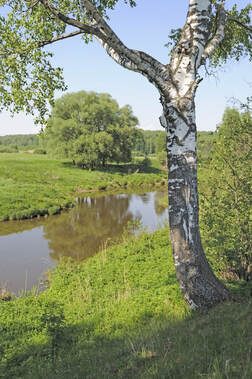 The name river birch offers a hint regarding the needs of this elegant tree. It loves the wetlands, is continuously thirsty, has a glittery trunk, and hanging limbs. As long as you provide the river birch tree root system with adequate water, its roots will not destroy your home. The River Birch Tree Root System: Flexible and Attractive The river birch is best for forests and the everglades. Satin, silver bark covers the trunk. As the bark grows older, other colors, such as lavender, orange, and salmon, shine through. Most river birch trees grow no more than 50 feet tall. Though, some could flourish up to 100 feet. In autumn, the diamond-shaped leaves become golden yellow before falling from the trees. Its flowers look like catkins in the winter and springtime. In the summer, the river birch tree produces brown or green cones. This tree mainly grows in the area east of the Mississippi River. Water Everywhere Each tree has its favorites. With several options, the river birch prefers growing in acidic, damp soil situated in a cool climate. However, this tree is compliant and could grow in standard soil as long as it receives the correct water amount. The river birch is famous for being disease-free. This tree hosts other insects, like beetle borers, aphids, and anthracnose. Though, they do not affect the overall health of your river birch tree. The Roots The river birch's root system is vast and wide. Tough, but not mighty enough to wreak disaster on your foundation. While some might fear the tree's roots will get into the plumbing, there's no proof to suggest this. Several arborists state that when river birch trees become dry, the leaves fall, and the tree dies. River Birch Seeds The river birch makes separate female and male flowers. Small cones filled with hairy seeds comes from pollination. Some birds, including grouse and wild turkeys, feast on birch seeds. You can begin new birch trees by surface planting fresh seeds in a protected area. The budding trees require moisture and light to grow. Want more information on river birch trees? Give us a call at Tree Service York PA. 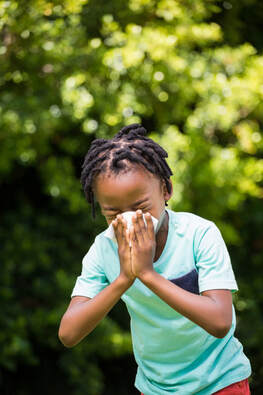 Enjoying the outdoors and having allergies is a painful combination, particularly when you have issues relaxing in your own outdoor space. While it isn't simple to construct an allergen-free landscape, you can do things to aid in reducing your exposure. To start, you need to know the best and worst trees for allergies. With the warm days and the sunshine, you can't refrain. Though, when your allergy symptoms begin, it could swiftly put a damper on your day. There are ways to help stop this. For example, you can include individual plants in your landscape to help eliminate your contact with pollen. Worst Trees for Allergies If you want to put trees into your landscape, you must avoid using monoecious trees. Monoecious trees have male and female sections. They also create pollen. If you have allergies, steer clear of these species because they produce pollen and cause a reaction. Examples of monoecious trees (worst trees for allergies) are: • Elm trees • Pine trees • Spruce trees • Beech trees • Cottonwood trees • Aspen trees • Oak trees • Hickory trees • Birch trees Best Trees for Allergies Dioecious trees are either all female or all male. The male tree makes lots of pollen, and the female tree doesn't. When picking dioecious trees, be sure you choose a female tree to aid in lessening your pollen exposure. It is vital to note that female dioecious trees possess fruits and seeds. Therefore, additional lawn cleanup and lawn maintenance are necessary. Examples of dioecious trees (best trees for allergies) include: • Red cedar trees • Willow trees • Ginkgo trees • Poplar trees • Fir trees • Ash trees • Mulberry trees • Red maple trees • Holly trees • Silver maple trees Allergy testing is the best way to decide which plants trigger instigate your allergic reactions. Your allergist can help you come up with ways to handle your allergies and avoid harmful allergy-prone plants. Keep up with wind patterns when you determine where to put specific plants in your landscape, especially when it comes to your bedroom windows. Pollen that generates allergies is so tiny that it wafts from far away. Call Tree Service York PA for trees to stay away from when you suffer from allergies. 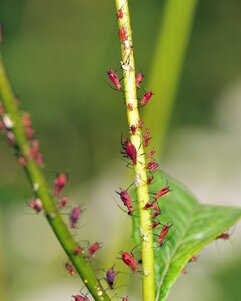 Underdeveloped growth, discolored leaves, and a nasty black gummy substance could mean that you have aphids. Aphids feast on a vast selection of plants. While eating, the insects discharge a substance that turns into black mold. For this reason, it's vital to know how to get rid of aphids. Learning How to Get Rid of Aphids the Natural Way Killing aphids naturally is not only good for the earth, but it's also more efficient. Aphids have many natural enemies. These bugs are way better at handling aphids than any other technique used by gardeners. Encouraging and coddling their natural enemies is an ideal method of eco-green aphid control. Putting insects such as ladybugs and lacewings in your garden is one way to kill aphids naturally. Insecticides will kill the predatory bugs instead of the aphids. The insect population typically rises after spraying. Using natural ways to kill aphids sustains the pests' natural enemies while making a harsh environment for aphids. While focusing on killing aphids, ants are their protectors. Ants feed on the honeydew created by aphids, so it is best to protect this useful resource. Eliminating the ants so that the insects can do their duty is a vital part of a reliable aphid control program. Controlling Aphids Control aphids by cutting the plant's bottom parts so that they don't hit the dirt and provide aphids with easy access. Cover the bottom part of the stem with a gluey product to stop the aphids from ascending. You can put the sticky substance right on the trunk of shrubs and trees. Apply tape to the stems of other plants and put the product on the tape instead of the stem. Neem oil works as an organic aphid control pesticide too. Killing aphids naturally is better for the environment and your garden. Here are a couple of tips:
For more tips on how to get rid of aphids, contact Tree Service York PA. 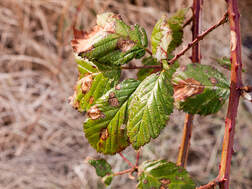 Tiny, sap-sucking arachnids called spider mites can be an issue any time of year. They plague your houseplants, greenhouse, or garden as well. Telltale signs that you’ve been infested include brown webbing on your leaves or speckled leaves. When you want to learn how to get rid of spider mites on plants, try simple techniques and non-toxic remedies. Materials and Tools
Step 1 Just wash the spider mites away. Pressure-sprayed water is quite effective against spider mites. Blast plants from underneath to get the back of leaves. Then, take a damp, clean sponge to wipe the backs of leaves, rinsing the sponge after every wipe. Step 2 Prune any stems or leaves spider mites have damaged, putting the clippings in a plastic bag and putting it right in the trash, not your compost. If the whole plant has evidence of mites, or its health seems too bad to come back, get it completely cut down to stop infestation from spreading. Call a York Tree Arborist to schedule tree removal service. Step 3 Combine this non-toxic, all-natural solution that’ll get rid of the invaders without damage.
A combination of water and soap is frequently used as a repellent. However, rosemary oil aids in emulsifying the solution, making it easier to spray. Pour all the ingredients in a bottle, shake well, and put a spray bottle. Shake completely before using. Spray plants either late or early in the day, avoid the hot time. Spray plants every day for at least four days, then on alternate days for 14 days. When you’ve got the problem under control, keep spraying once a week to keep plants healthy. Step 4 For outdoor plants, think about using ladybugs, predatory mites, and lacewings once you’ve gotten the issue under control. They’ll eat the spider mites and the larvae. You can also plant chives, dill, garlic, and onion in your garden to fend off spider mites. 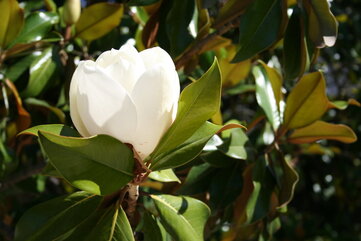 Magnolia trees and the South go together like milk and cookies. There are over 75 species of magnolias. Magnolias can be deciduous or evergreen, blooming in summer or early spring. Knowing how to prune a magnolia tree is crucial to maintaining their health in their outdoor space. Magnolia Tree Pruning Though pruning magnolia trees isn’t needed, youthful trees can be formed as they flourish. Pruning a magnolia tree when it is new enhances the tree’s health and entice more blooms. Older magnolia trees don’t recover from trimming. Therefore, trimming older magnolia trees must only be performed as a last resort when needed. When to Prune Knowing when to prune magnolia trees is vital. Young evergreen magnolias are best pruned in mid to late spring, but only when necessary. Shorten young, long limbs and get rid of lower boughs if you want a clean stem. Some magnolia evergreens are attached to a wall and must be pruned in the summer. Young deciduous magnolias necessitate pruning apart from getting rid of damaged, weak branches or long vertical shoots. Deciduous magnolias must be trimmed between early fall and midsummer. Over pruning, even on a young tree, creates stress. With any magnolia, it is best to aim on the side of trimming too little than too much. Slightly trimming a magnolia tree is better. How to Prune a Magnolia Tree When you want to prune, it’s a solid idea to know how to trim magnolia trees. Always prune trees with sharp, clean pruning shears. Be very cautious when trimming magnolia trees not to injure or rip the bark. Remove all diseased, dead or otherwise damaged branches first. Get rid of any limbs that aren’t in line with the tree’s usual shape. Eliminate limbs that are crossing, cutting off, or rubbing any suckers. Also, be sure to stand back and inspect your work every time you perform a cut. Remember to always slice limbs off just outside of a branch collar, never taking off more than 1/3 of the tree every season. Avoid trimming a mature magnolia unless really needed. If you want to have a York Tree Care Arborist evaluate your magnolia, contact us today! 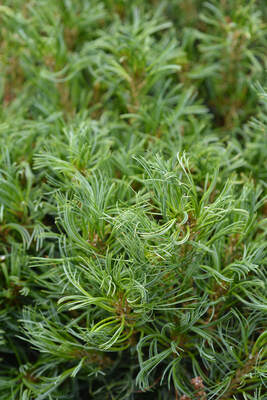 Eastern White Pine Tiny Kurls Eastern White Pine Tiny Kurls Have you ever wanted to have your very own pine tree in your landscape? Well, you’ll be pleased to know that there are many different types of pine trees to choose from. Choosing one can be an overwhelming process. This is where this article comes in. Below are some favorites that might work for your outdoor space. Call a tree care company in York if you need more tree suggestions. Eastern White Pine Eastern White Pine is also called the Northern White Pine. This is because it is one of the most popular trees found in North America as it is the tallest native tree. This tree is the fastest growing conifers found in the north. Also, this makes it a good choice for reforestation projects. Moreover, it is also a popular choice for a Christmas tree. Western White Pine Western White Pine is also called a California mountain pine or a silver pine. These trees reach heights of over 220 feet and grow to widths of over 160 feet. It is really a majestic looking tree. The Western White Pines are typically grown as ornamental trees. The needles of these trees are soft, with jagged, fine edges. Loblolly Pine Loblolly Pine is also called a yellow pine. These trees can get to heights of over 110 feet and width of five feet. In some instances, a Loblolly Pine grows over 150 feet. These trees help to stabilize soil. The needles are at times twisted. The cones are green in color, growing close to five inches in length. Every one of these cones possesses a sharp spine. Lodgepole Pine Lodgepole Pine is sometimes also known as a twister pine or a shore pine. There are four various types of subspecies of this tree. Based on which subspecies you pick, the Lodgepole Pine is a shrub or an evergreen tree. If a shrub form is picked, it will grow to just 10 feet tall. Other, bigger subspecies can grow over 150 feet high. Limber Pine Limber Pine is called “limber” because of its pliant limbs. The needles of this tree are dark blue-green and long. The Limber Pine grows over 60 feet in good conditions and can sometimes get to 80 feet. However, that is rare. The needles are a soft pine with broad-leaved sheath. These are just a few various kinds of pine trees available. If you are looking to beautify your outdoor space and want to know the best one for your space, call York PA Tree Service. They offer advice for the perfect pine. |
© Tree Service York PA 2016-2020
Leaders Heights | Jacobus | Emigsville | Mount Wolf | Manchester| Marietta | Bainbridge | Wrightsville | Dallastown |Windsor | East Prospect |York Haven | Red Lion | Dover | Loganville | Seven Valleys
Tree Service York PA
2536 Eastern Blvd #102
York, PA 17402
(717) 216-4888
2536 Eastern Blvd #102
York, PA 17402
(717) 216-4888

